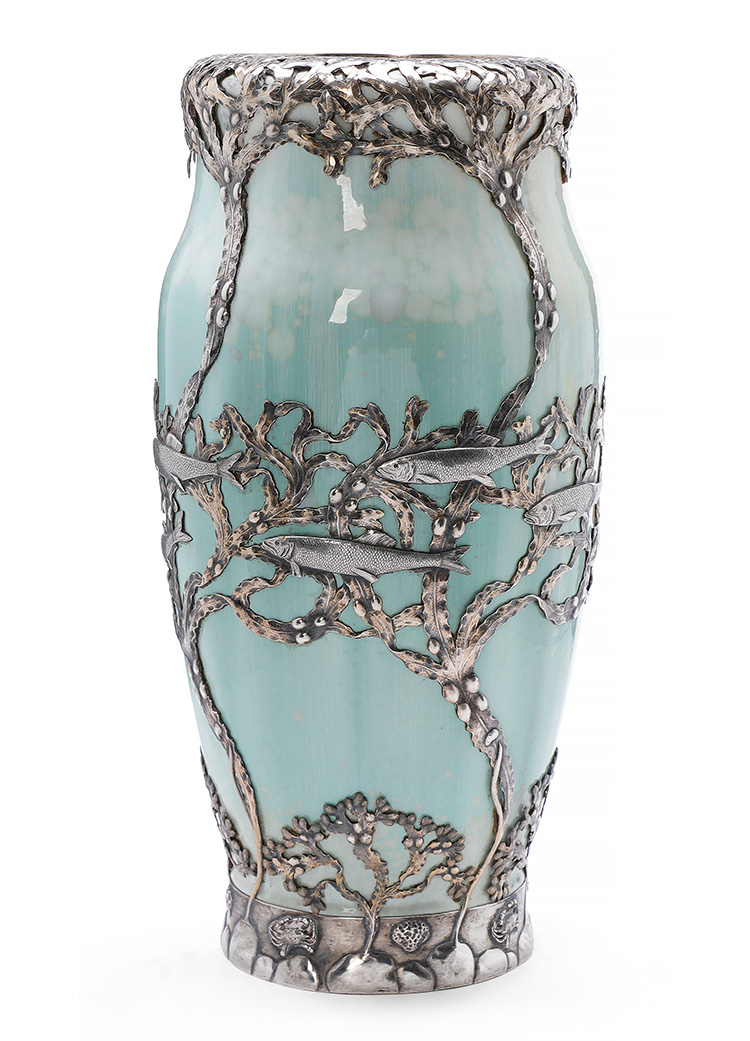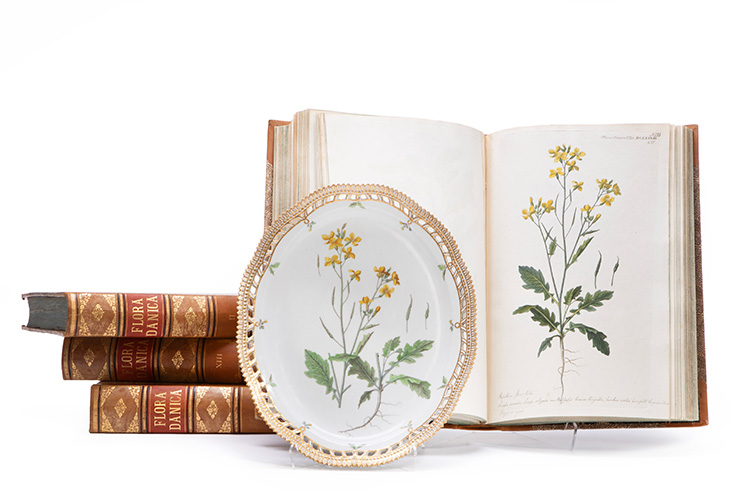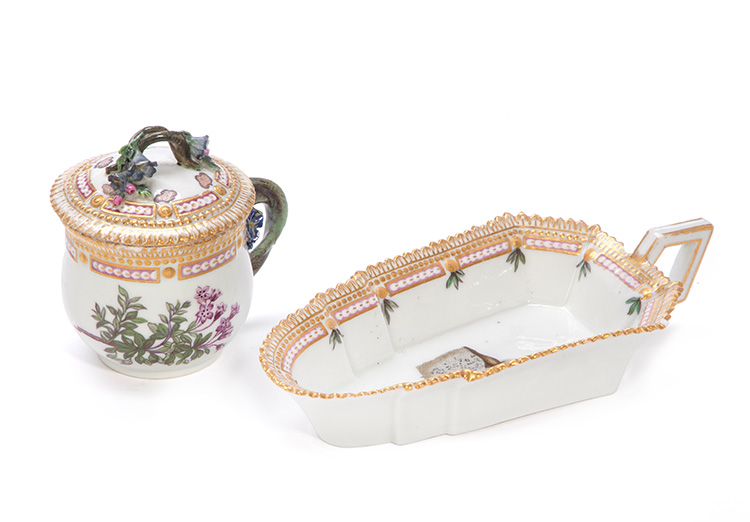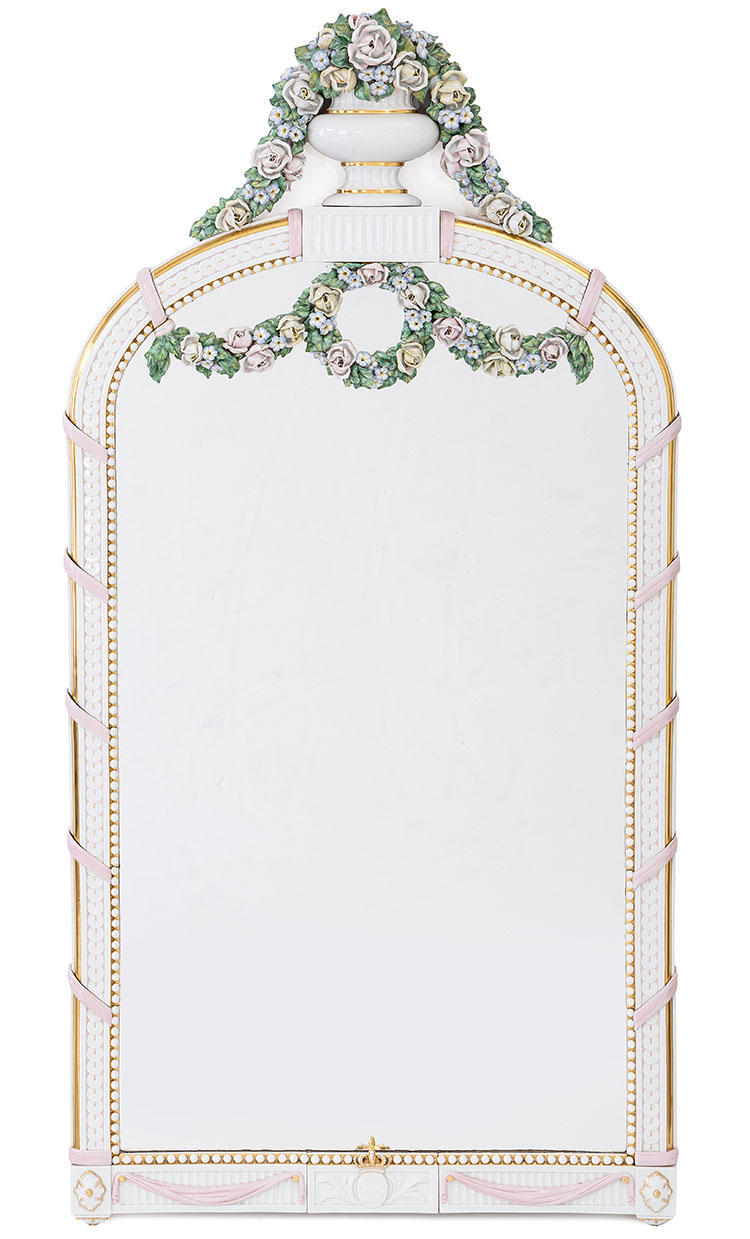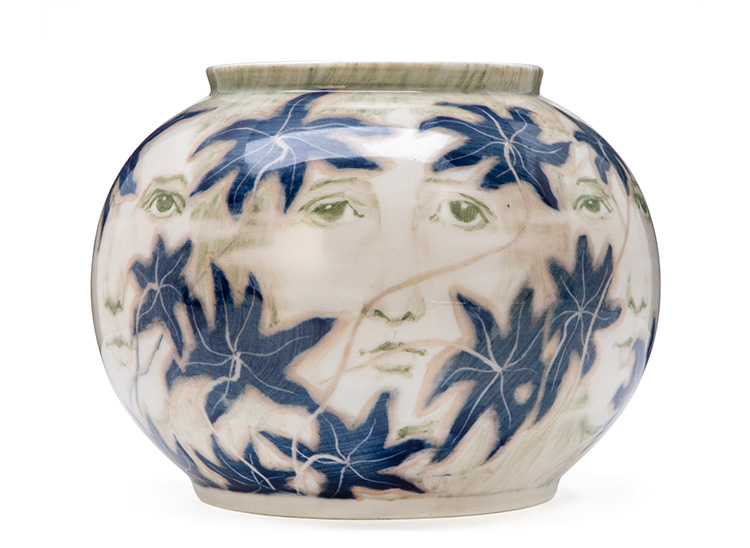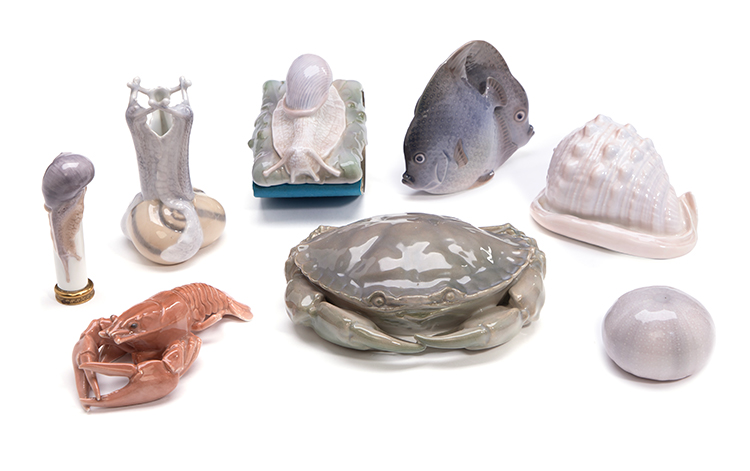
Online Auction: The Twinight Collection
The Twinight Collection is one of the world’s largest private collections of 19th century European porcelain. Featuring masterpieces from most porcelain manufactories, it has been exhibited at the Metropolitan Museum of Art in New York, Charlottenburg in Berlin and at the porcelain museums in Sèvres and Vienna, to name but a few. Parts of the collection, including pieces of the original Flora Danica service and works by Effie Hegermann-Lindencrone, Fanny Garde, Knud Valdemar Engelhardt and Arnold Krog, are now coming up for auction.
The sale of the Twinight Collection is a collaboration between Bruun Rasmussen and Bonhams’ global network of auction houses. The Danish part of the collection will be sold at an Online Auction at 5 pm on 1 July at bruun-rasmussen.dk, while the remaining part will be sold at auction at Bonhams in London at Live Auction on 4 July and at Bonhams Skinner in Marlborough, Mass. USA, later this year.
”The Twinight Collection takes us into a wonderful world where art, aesthetics and craftsmanship come together to create something truly magical. It is with great humility that we offer the Danish part of the collection at our Themed Auction.”
Ralph Lexner,Head of Department and Specialist at Bruun Rasmussen
World-class
The Twinight Collection was started in 1994 by businessman Richard Baron Cohen of Long Island, N.Y. Today, the collection, which initially consisted of a few plates purchased in Camden Passage in London, is recognised as a unique collection of rarities of the highest quality. The genuine love that Richard Baron Cohen has for porcelain and its craftsmanship is evident in his description of the beautiful collection. According to him, porcelain has a soul. Some of the collected porcelain was originally exchanged as gifts between princely courts. Some belonged to historical figures, while other pieces were produced as exquisite specimens in a never-ending competition between the leading porcelain manufactories around the world. The highlights of the Danish part of the collection include Flora Danica porcelain, some of it from the original service, as well as the most beautiful Art Nouveau vases and ornaments from Royal Copenhagen and Bing & Grøndahl.
|
|
|
|
Flora Danica – From Reference Work to Dinner Service
There is a special place in Richard Baron Cohen’s heart for the Flora Danica service, whose botanical motifs were the most challenging of all in the refined art of porcelain painting. The painting of the floral motif demanded a meticulous sense of detail and a highly complex colour palette, which had to be custom-made. And then there was the design. The Royal Porcelain Manufactory’s production of the Flora Danica service began in 1790 and continued until 1802. At that time, the Flora Danica reference work was still in the process of being published. The first booklet was published in 1761. The extent of the project, which was expected to take 10 years, had been greatly underestimated. Instead, it would take 122 years to complete the work with its impressive 3,240 hand-coloured plates, making it the world’s largest floral reference work. It catalogued the Danish flora, which at the time included the flora of Denmark, the duchies, Norway, Iceland, the Faeroe Islands and Greenland. The motifs on the porcelain service are taken from the books’ engravings and painstakingly copied from book to plate, one-to-one. Complete editions of the botanical pictorial work, which ended up as motifs on royal porcelain, are extremely rare at auction, and the complete 18 volumes are also set to go under the hammer. The Flora Danica service was used for the first time on 29 January 1803. It was for King Christian VII’s 54th birthday.
Collector and Patron
Richard Baron Cohen is not only a collector. He is also a patron, who once commissioned the “Hippopotamus Service” from Royal Copenhagen, the design of which is identical to Flora Danica, while the decoration depicts named hippos from zoos all over the world. His historical interest in and love for Flora Danica cannot be denied. At the same time, he commissioned 3,000 pieces of Flora Danica, hand-painted from the botanical posters that were not used for the original service – something that it has taken Royal Copenhagen six years to complete. Among museums, researchers and collectors, Richard Baron Cohen is first and foremost known as a collector, but he is also recognised for his immense knowledge.
” You’re filling a void. There's something that's missing in your life. It is a random world we live in. A chaotic world. And the only thing you can do is to create order. So you build a collection, it's ordered, it's numbered, it's catalogued, and you know everything about it, and you are the one that controls it.”
Richard Baron CohenArt Collector and owner of the Twinight-Collection
The Twinight collection, which originally consisted of a few pieces, has grown to more than 7,000 items over the years. Richard Baron Cohen has done the maths – a sum guaranteed to make any collector envious: He has collected no fewer than 1.4 items of porcelain every other day for 20 years. However, he stresses that it is the people he has met along the way who have given him the greatest joy.
And the name Twinight? It comes from Cohen’s favourite time of the day, when the sun goes down, and the light casts glowing, pink hues on the stone façade of his house in Long Island –which, incidentally, is a replica of the Petit Trianon. He came up with the word Twinight himself, a play on the word Twilight – the name of the porcelain collection and the name of the house. Bid on the porcelain from Richard Baron Cohen’s world-famous Twinight Collection at our Online Auction on 1 July.


BONHAMS LONDON: 500 Years of European Ceramics & The Twinight Collection
Thursday 4 July
For further information, please contact
|
|
Ralph LexnerRalph LexnerHead of Department / Decorative Art & Classic Interior / København |
|
|
Alexandra NilssonAlexandra NilssonSpecialist / Decorative Art & Classic Interior / København |
|
|
Torben Friis MøllerTorben Friis MøllerSpecialist / Decorative Art & Classic Interior / København |
|
|
Line Hjorth LangkjærLine Hjorth LangkjærSpecialist / Decorative Art & Classic Interior / København |
|
|
Nick MessmannNick MessmannSpecialist / Fine Art / Aarhus |
